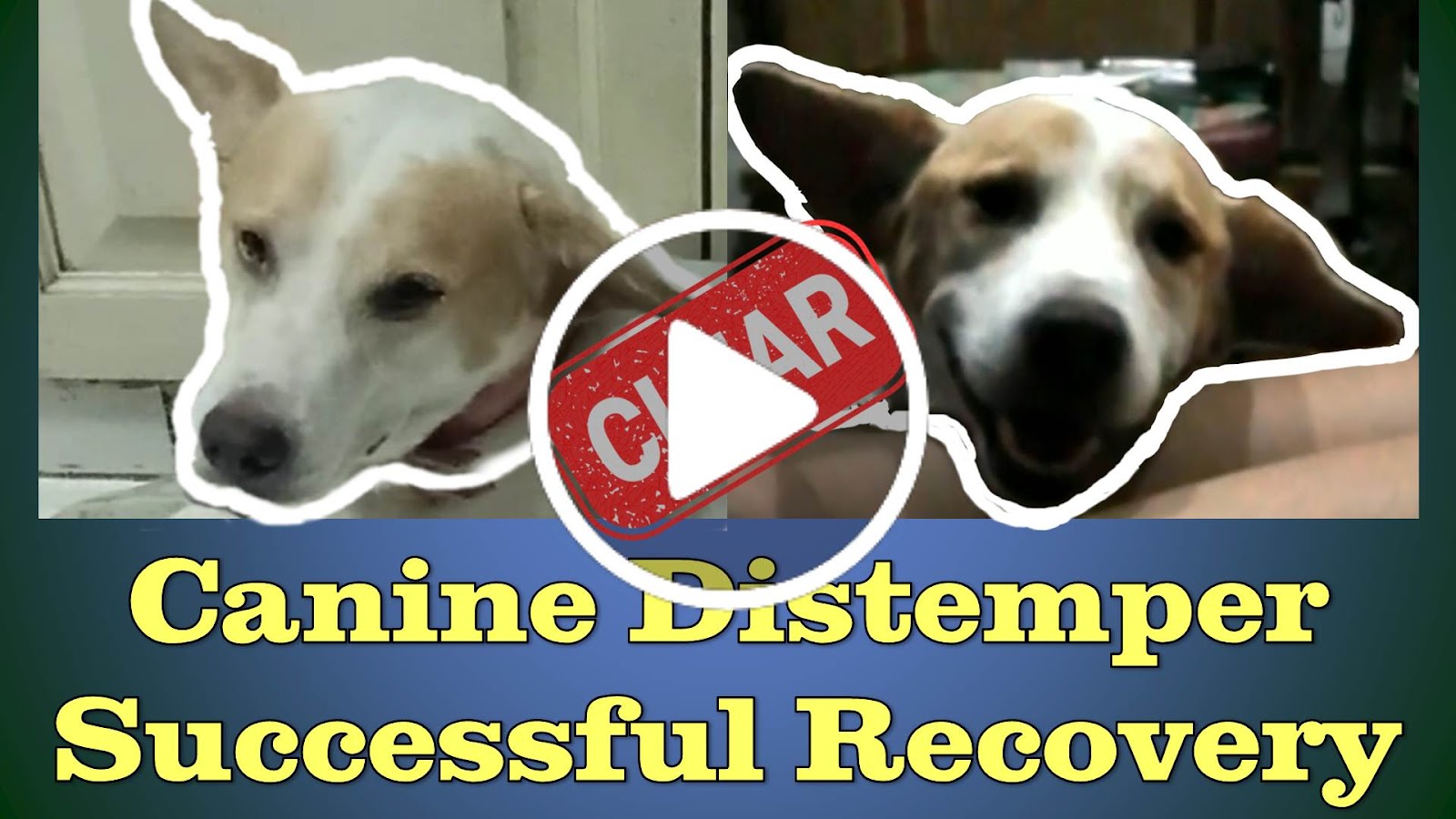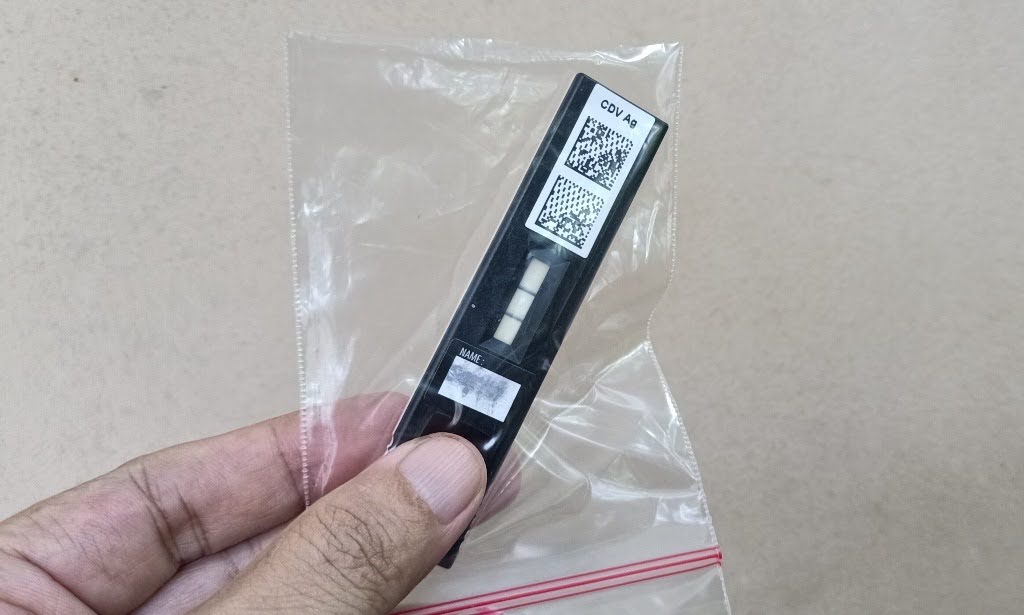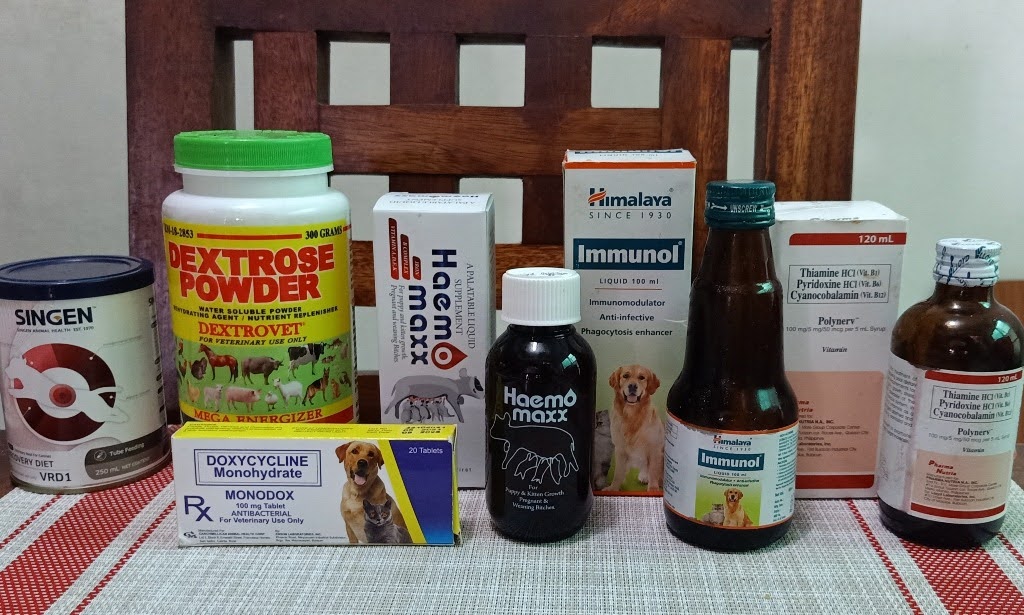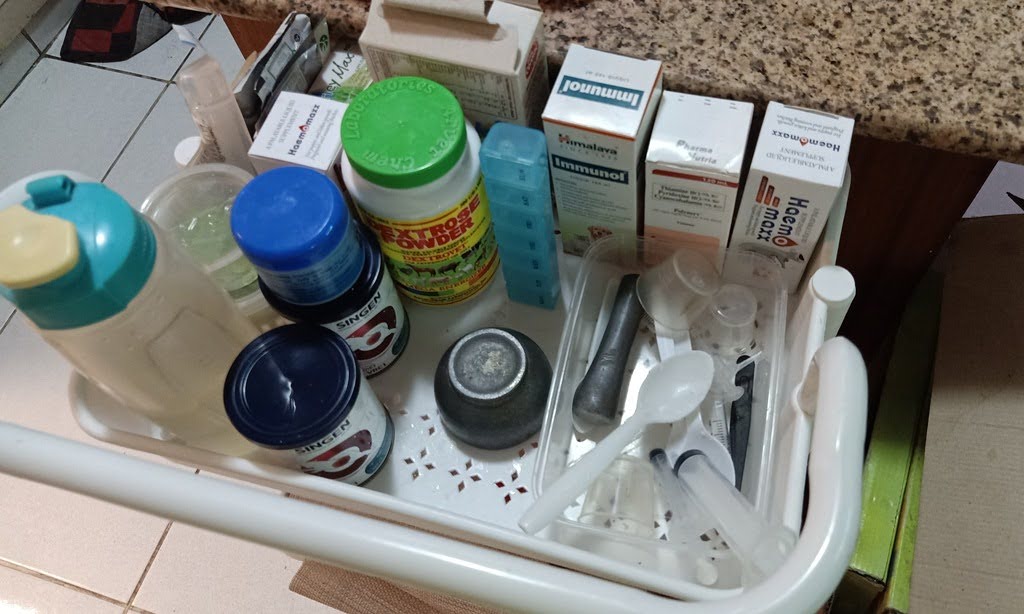Video Tutorial
Watch the video below to help you better understand the rest of the article.
Checking for Canine Distemper Symptoms in Dogs
Chances are, that by the time you're reading this, your dog may have been diagnosed with Canine Distemper already. And this is very important - that your pet has been CORRECTLY diagnosed with this dreaded viral disease.
Some dog owners already suspect their pet dog had contracted Canine Distemper after just seeing some symptoms. They perform some home remedies, and if the dog recovers, they proclaim their pet to be a Canine Distemper survivor.
There's certainly nothing wrong with home remedies, as long as they're the suitable treatments. Unfortunately, the mistaken dog owners proclaim these home remedies as the treatment for Canine Distemper.
But seeing symptoms doesn't lead to a definitive conclusion. Veterinarians also use test kits (similar to pregnancy test kits), as well as CBC test results, to determine the presence of the virus and guide you appropriately on what to do.
So, see a Vet immmediately to have your pet dog checked and tested that he is indeed positive for Canine Distemper.
Testing for Canine Distemper
To test for Canine Distemper, veterinarians would typically use a CDV (Canine Distemper Virus) test kit. The test kit, also known as the CDV Ag Test Kit looks like the one below.
Samples taken from the dog may include nose mucus, saliva, conjunctiva secreta (eye discharge) and blood. Results will appear in about 10 minutes. Two bars on the display indicate a positive result.
The CDV Ag test kit in the above photo is Santi's and, yes he was postive for Canine Distemper.
What Medicines We Gave for Canine Distemper
Again, as mentioned before, there are really no medicines or drugs to specifically treat Canine Distemper. What can be done is to treat symptoms like coughing, vomitting, fever, and others.
But as far as the virus is concerned, there are no drugs or medicines to treat it, much like other common virus. Vaccination, BEFORE a dog contracts Canine Distemper is really just the best way to prevent the virus.
To fight the virus when the dog is already infected means to rely on his body's immunity to fight it, and let the virus take its course until it is shed. Therefore, it is imperative to boost the dog's immunity by all means possible.
Supplements to Give a Dog that is Positive for Canine Distemper
The medicines/supplements are some of those that were given to Santi when he was diagnosed with Canine Distemper
- Singen Recovery Diet - Because Santi was no longer eating and was actually vomitting, we found it difficult to feed him. Initially, we fed him the Royal Canin recovery diet which was like liver spread in texture. Eventually though, Santi wouldn't eat that anymore. So, we had to find a way to force feed him. We found the liquid Singen Recovery Diet was easier to give.
- Dextrovet Dextrose Powder - When Santi suddenly stopped eating, he still continued to take in water. The Vet suggested dextrose powder so Santi could still have glucose in his body. We just mixed a spoonful of the powder in a small bowl of water and give him as much as he wanted.
- Haemomaxx Liquid Supplement - This was prescribed to address the low RBC condition of Santi. It has high Iron content and other minerals as well as vitamins like B-Complex and others.
- Immunol Liquid - This supplement has extracts that boost the immunity of pets. It enhances the effectivenesss of anti-microbial therapy for recurrent infections and is a good follow-up with antibiotics in acute bacterial infections.
- Polynerv Syrup - This is essentially Vitamin B-Complex supplementation. Canine Distemper attacks the nervous system in dogs and the B-vitamins help boost the nervous system.
Antibiotics to Fight Infection Brought by Canine Distemper and Blood Parasitism
To fight infections, especially the secondary infections that come with the Canine Distemper symptoms, antibiotics are needed. The symptoms that may lead to secondary infections include coughing, eye discharges, etc.
These infections need to be treated - and they can be treated with antibiotics. If untreated, they can lead to more complications which compromise the dog's immunity to fight the virus.
For Santi, Doxycycline (100mg tablet) was administered as the antibiotics of choice by the Vet. They were given in the following manner:
| Date | Weight | Medicine | Amount | Frequency |
|---|---|---|---|---|
| Aug 11 | 15.6 kg | Doxycycline 100mg | 1.5 tablet | Once a day for 14 days |
| Aug 18 | 14.3 kg | Doxycycline 100mg | 1.5 tablet | Once a day for 7 days |
| Aug 26 | 12.6 kg | Doxycycline 100mg | 1.25 tablet | Once a day for 7 days |
| Sep 02 | 12.9 kg | Doxycycline 100mg | 1.25 tablet | Once a day for 7 days |
| Sep 10 | 15.0 kg | Doxycycline 100mg | 1.5 tablet | Once a day for 14 days |
Santi was tested positive for Canine Distemper on Aug 18. Notice that that he has been taking antibiotics since Aug 11. This was because he also initially tested positive for blood parasitism on Aug 11.
So, did the amount double when the prescription dates overlapped? No, the prescription (for Canine Distemper) were just that - it was what was required. It didn't mean adding on to a previous prescription (Blood Parasitism).
The Vet was careful enough not to overload Santi with too much antibiotics in his body or it may wreak havoc to his internal organs (liver, kidney). So tests were done regularly to see if more was needed after each successive dose.
Also notice that Doxycycline was reduced from 1.5 tablets in Aug 18 down to 1.25 tablets in Aug 26. The reason is because Santi lost so much weight. The amount of antibiotics adminstered is based on the dog's body weight.
It was definitely a challenge to be able to have the dog take in these supplements and medicines especially if he is unwilling to eat. All the more so when the pet growls if tablets are attempted to be pushed down his throat.
We found out that the best (and for us, the only way) to administer medicine and food is by forcefeeding via syringe. It also helps if you could set up a dedicated place. Have a bin or a rack like the one above to store all the dog's treatment needs.
I wrote an article on how we specifically administered medicines and food for my pet dog.
Other Supplementation
- Canicee Syrup - This is simply Ascorbic Acid or Vitamin C. Vitamin C is something I noticed that was not present in the Haemomaxx Liquid supplement that was prescribed. I asked why and the Vet said dogs create their own vitamin C and probably would not need it. I've read that others add it as it is an immune booster. So the Vet relented and suggested their store ascorbic acid Canicee.
- Pizotifen Maleate - The brand is Pediappetite and it is an appetite stimulant. It is also given to infants so they will eat more. It's funny because the Vet described it as "something that will make Santi hungry". Not sure if it made him hungrier, but it did stimulate his appetite and he did want to eat more.
- Maalox Tablet - Aluminum hydroxide/Magnsium hydroxide. There were times when the dog had too much stomach acid. This is indicated when the dog has liquid vomit as Santi did especially early in the morning.
Note: To see the complete list and schedule/doses of medicines given to Santi, see this link: Distemper Medicines Tutorial.
Canglob-D Injections for a Dog with Canine Distemper
I was researching in the internet on possible treatments that may help Santi recover from Canine Distemper and came upon this mode of treatement. In one of the follow-ups, I asked the Vet about it, since she never brought it up.
She said the clinic administers the Canglob-D shots (I suppose to those who want it for their dogs), but the clinic didn't have it on stock. She, however, said they'd be reordering it if I wanted it for Santi.
I sort of wondered why they didn't routinely offer it upfront. Maybe the price is the major factor since it will require a minimum of 5 injections. The price will depend on the amount to be used, which in turn, depends on the dog's weight.
Shown below is the actual vial that was used for one of Santi's Canglob-D shots.
Did it treat Santi's Canine Distemper? I wouldn't say it did directly, but I would say that Santi felt so much better just after the first Canglob-D shot. From the video, you can see the immediate effect already on the following day!
Now imagine, when after all the Canglob-D shots were administered. There definintely was a significant and dramatic improvement in the dog's condition.
I have another article that describes further how Canglob-D helped with the Canine Distemper treatment of my dog. In that article, I illustrated much further how Santi benefitted from the injection of the Canglob-D shots.
Bottomline, in my observation, is that the Canglob-D shots helped the dog tremendously in fighting and surviving Canine Distemper and eventually recovering from it.
How to Know if your Dog is Cleared of Canine Distemper
Wait for at least 2 weeks after the symptoms have disappeared. There should be no more distemper coughing and no more eye and nose discharges. This 2 week period is a phase called viral shedding.
Even when the symptoms have disappeared, some virus particles may still be coming out from the dog's body, eyes, mouth, and nose. So it is best to wait it out until the virus is shed. That way, you don't have to continually test for the virus, and unnecessarily getting a positive result.
Again, for a definitive conclusion, a CDV-Ag test is a must. Shown below on the right is Santi's CDV-Ag test kit showing one bar or negative for Canine Distemper.
Other Activities that Helped to Recover from Canine Distemper
Depending on the severity of the Canine Distemper infection, it may take significant amount of resources to help alleviate and recover from the disease. For this, the dog owner then needs to be committed to the palliative care of the dog.
Others that helped are as follows:
- Encouraging the dog to always go out when he's able. We always encouraged Santi to go out of the house and not stay inside. This is to allow him to roam and get some sunshine. This gives him the opportunity to get back to his old environs and not the confines of the house, as well as get some exercise.
- Have the patience to record any new developments in the dog's condition and that includes his poop or his vomit or anything that seems out of the ordinary. Taking pictures of these will help. I believe we were able to communicate to the Vet exactly what was happening to the dog with this information. In turn, we were guided accordingly by the Vet on the next steps.
- Do your own research and ask plenty of relevant questions. My own thinking here is, we're paying for consultation. The Canglob-D injections wouldn't probably have been offered, had I not brought it up with the Vet. In other words, also ask other possible options.
Happy Dog Walks!







Go ahead, post your comment below!